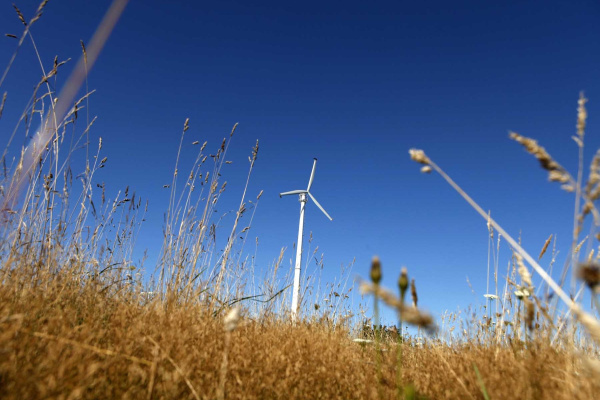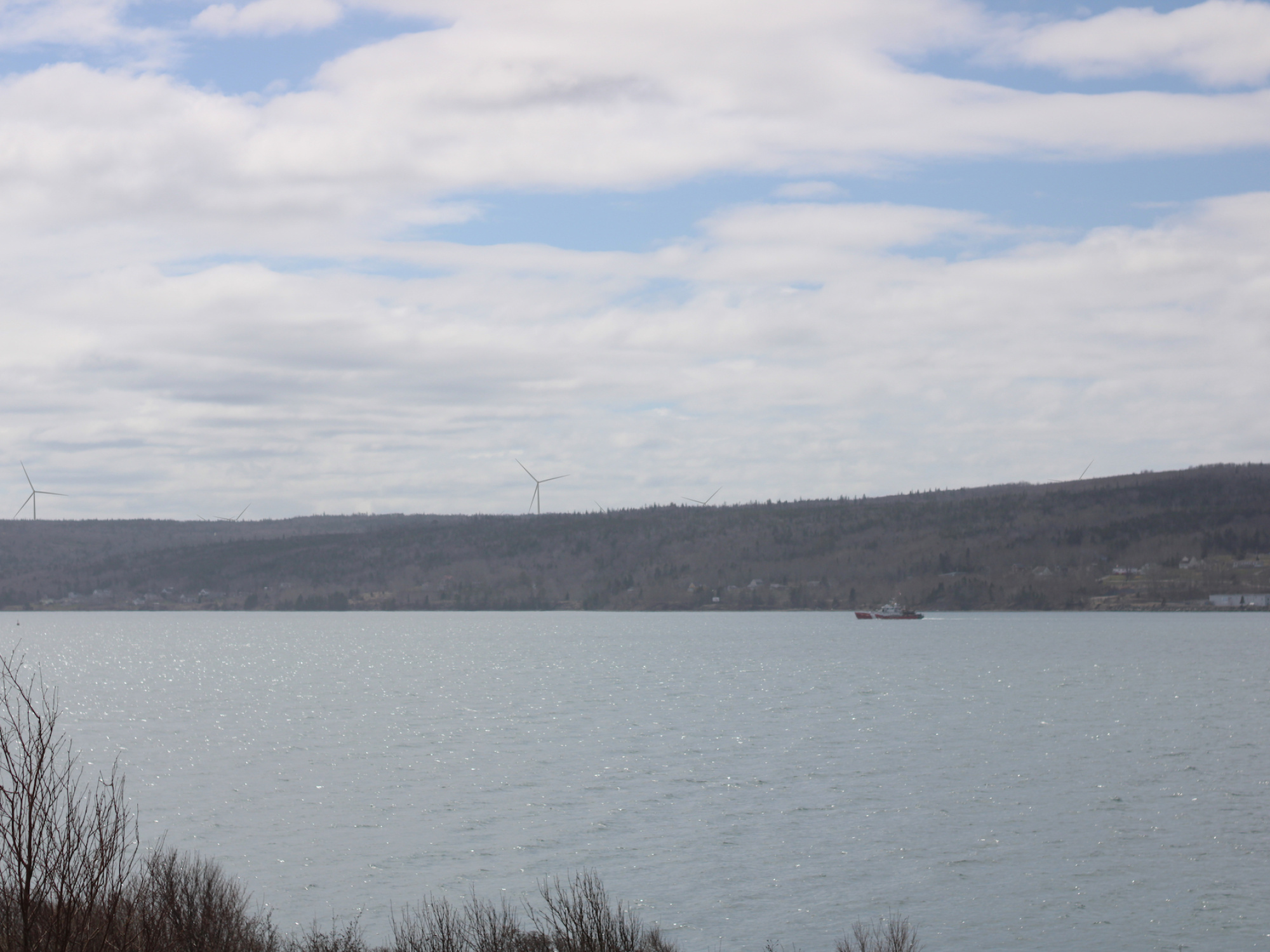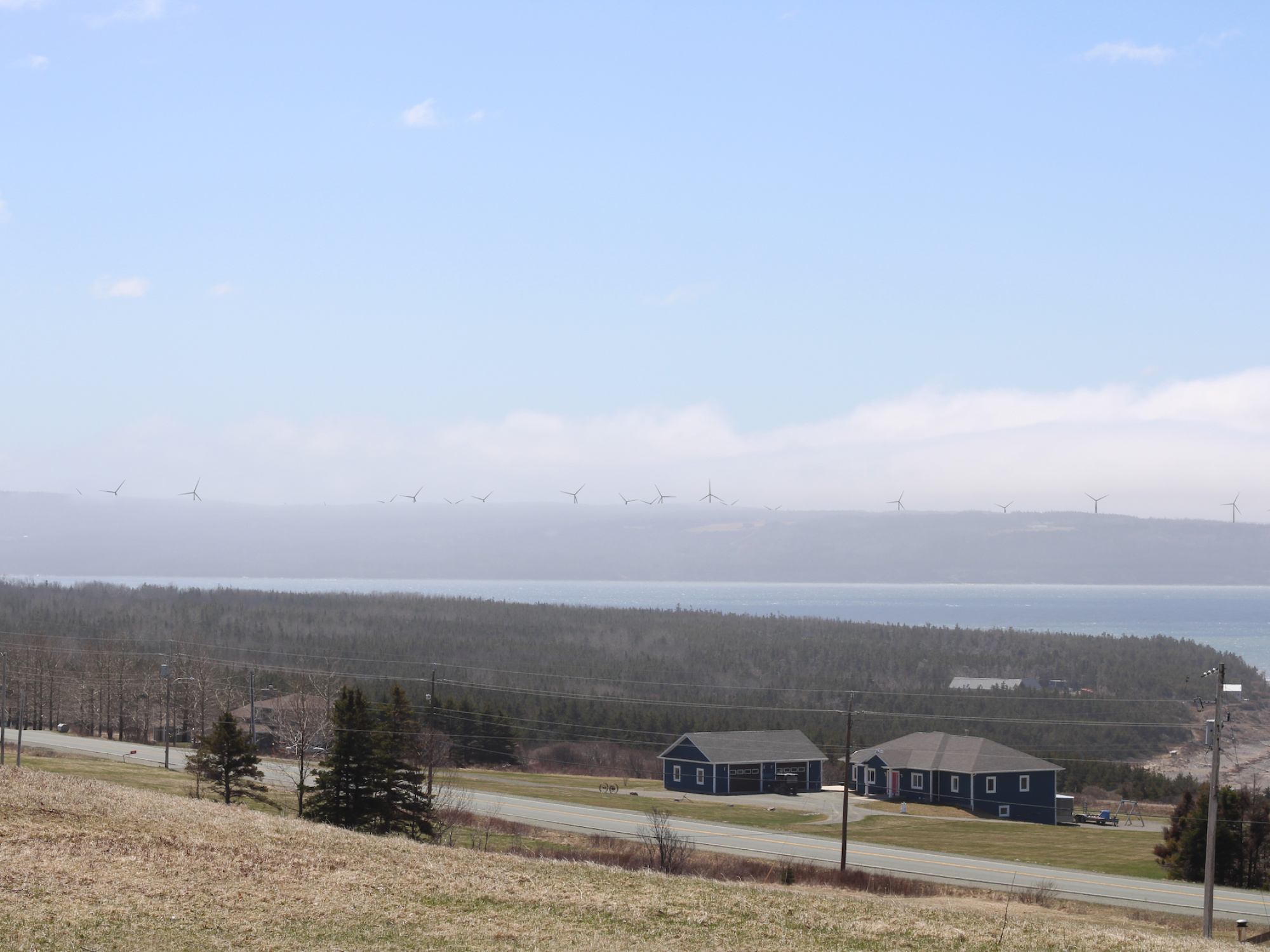
Energy powers economies, industries, and communities. But generating it has been a major source of greenhouse gas emissions and climate change. Transitioning to clean, renewable energy isn’t just necessary—it’s urgent. Across the province, Nova Scotians are looking for opportunities to make the switch.
In Guysborough County, the winds of change are blowing. The Goose Harbour Lake Wind Farm is unlocking Nova Scotia’s potential, delivering clean energy, good paying jobs, and economic benefits while securing a stable future for one of the region’s biggest employers.
The wind farm will be home to 24 turbines generating 168 megawatts of zero-emission energy, which will contribute significantly to helping Nova Scotia reach its target of 80 per cent renewable electricity by 2030. That’s enough to cut more than 350,000 tonnes of greenhouse gas emissions annually. By reducing reliance on fossil fuels and adding clean renewable energy to the grid, Goose Harbour Lake Wind will help create a more resilient future for Nova Scotia and help the province achieve its legislated greenhouse gas reduction targets and achieve net-zero emissions by 2050.
Projects like this, that produce clean energy here in the province, also contribute to Nova Scotia’s energy independence, which reduces our reliance on purchasing power from other places and the uncertainty that can come with it.
But the project upsides go beyond helping Nova Scotia respond to climate change. The Goose Harbour Lake Wind energy project will fuel economic growth, create jobs, help keep one of Nova Scotia's largest and most important employers sustainable and competitive.
Port Hawkesbury Paper, the owner of the local paper mill, has a long history of taking a sustainable approach to forestry. Now, they are expanding their commitment to sustainability with the Goose Harbour Lake wind energy project.
As a crucial pillar of the region’s economy and a major employer, Port Hawkesbury Paper provides 325 direct jobs and 900 indirect jobs. As one of Nova Scotia’s largest consumers of energy, they understand the opportunity of clean, sustainable power. The move will help stabilize costs, reduce emissions, and ensure the mill’s long-term sustainability.
“Port Hawkesbury Paper looks forward to continuing our proud history of sustainable operations in Eastern Nova Scotia. This project will generate green energy for the benefit of all Nova Scotians and contribute to reducing both Nova Scotia’s and Canada’s greenhouse gas emissions,” said Bevan Lock, Co-Mill Manager.
The economic benefits extend well beyond the mill. Wind farm construction will create up to 150 full-time jobs, pumping millions into the local economy. Ongoing operations will also provide significant tax revenue for the municipality.
To harness the power of the wind, the Goose Harbour Lake project also harnessed the power of partnership and community collaboration. Led by project builder, Renewable Energy Services, the development team includes environmental experts, a community liaison committee and Indigenous leadership. Through Wskijinu’k Mtmo’taqnuow Agency Ltd., 13 Mi’kmaw First Nations have secured a 10 per cent equity stake, ensuring that economic benefits flow to their communities.
“The Goose Harbour Lake Wind Farm is a perfect example of how renewable energy can strengthen rural economies while advancing Nova Scotia’s clean energy goals,” said Peter Clibbon, Senior Vice President of Renewable Energy Services. “This is the kind of investment that drives real change—for businesses, for communities, and for the environment.”
Clean energy from Goose Harbour Lake will start flowing in 2026, but sustainability has been a priority from the start. The project must comply with stringent environmental requirements.
When the turbine blades begin to spin in Guysborough County, they will symbolize the incredible things that can happen when Nova Scotians unite. By transitioning to clean energy, the Goose Harbour Lake wind project is creating benefits that will keep our industries and companies strong and competitive, and our communities strong.

Render of the visual impact of the project when looking southwest across the Strait of Canso toward the site from Port Hawkesbury

Render of the visual impact of the project from along Route 16, Tracadie Road near Lincolnville

Render of the visual impact of the project when looking southwest across the Strait of Canso toward the site from Long Point